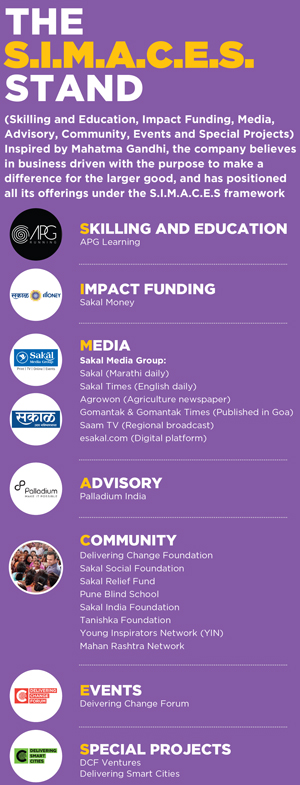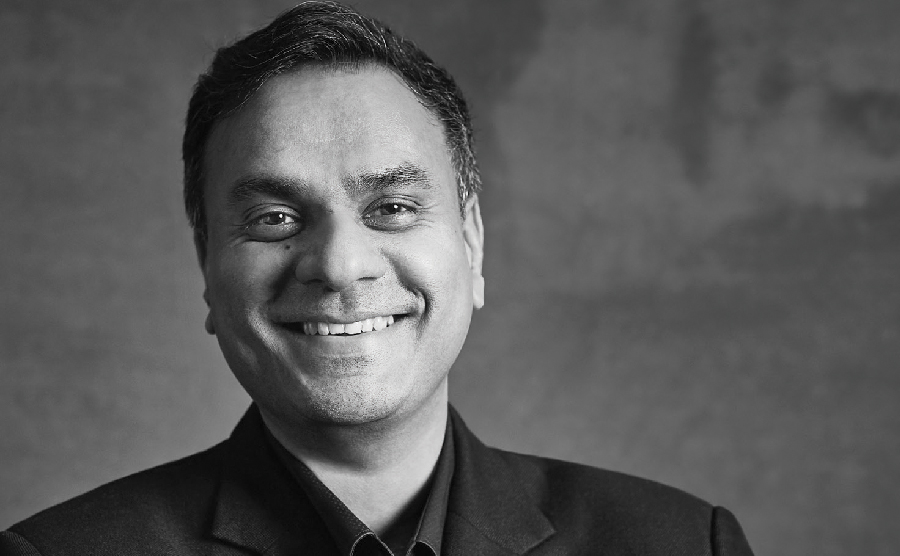Today, the challenge for every business is to be able to reach out to the right audience, communicate that you have a good product and make sure the consumer is able to buy the product or service and even recommend it to others. Then there is the digital divide and you need to have a combined solution. Only those who are uniquely positioned can give you the reach, and also provide customised solutions as we do. For instance, we can create solutions that demonstrate and talk of a product, provided it will benefit the consumer. Working with people at large, we know the rural and urban markets’ needs. So how do you give it to them in the most effective manner? This is how we can work with the advertisers and agencies.
 Q] According to you, what advantage do your media platforms have? Why should brands look to advertise with Sakal?
Q] According to you, what advantage do your media platforms have? Why should brands look to advertise with Sakal? Today, our biggest advantage is the ability to influence through our social influencers as well as content, and this has been possible due to the trust and credibility we enjoy. Our authenticity reflects in the ads too. We do not publish ads that promote products which go against the interests of society. When you advertise in the newspaper, therefore you get quality response. In fact, I suggest instead of a readership survey, there should be a response survey to gauge a newspaper’s audience. Serious readers are not influenced by the one-rupee schemes; they just need the right content. Today, we’re telling advertisers to talk to us, to work with us and we will create solutions for them. Today, why does an e-commerce platform like Amazon still spend on advertising in Print, if it does not get good response? You need all the mediums to work together - TV, Digital and Print. We promise brands a 360-degree solution. You want to reach Maharashtra? We will deliver Maharashtra to you, we’re confident about that. We’re willing to take a challenge - advertise for three months in our newspapers (Sakal and Agrowon), TV (Saam TV) and mobile/digital platforms (Yinbuzz, DigiThane, Sarkarnama and e-Sakal) and see the response. Besides this, we also have a large BTL and events division that can also help the advertiser.
Q] Which categories have been your major advertisers?
Education, retail and real estate brands are our biggest advertisers. Post elections, stability will come to the market again and you’ll see a very good run over the next five years.
Q] Could you share some revenue figures or even give us a percentage figure of how growth has been from last year till now?
Thanks to our SIMACES model, our revenues will grow by 15%-20% over the growth rate of the market. However, it is not necessary that we capture all the revenues in Sakal. We believe this is our future and our revenues will grow at a much faster pace from next year. The main reason for this is the customised solutions we would offer, working with select advertisers with a larger budget.
Q] What is your strategy to counter the slowdown in Print?
I don’t believe in the concept of perpetual freebies; people have to buy content. If you take the New York Times, it’s doing very well in America. It’s true that Print is in trouble, but that doesn’t mean every newspaper is in trouble. There is still an audience. People pay us the highest price for content, whereas the competitors have to give freebies and goodies to make people take their newspapers. So the battle of the future will be on curated multi-media content and smart pricing. If you’ve got digital play and funding, you can of course sell it at a lower price or give it free, but Print content cannot be sold cheap anymore.
Q] What kind of investments are going into tech and distribution at your end?
We can’t depend on only one product; we have to have multiple products. Our objective is to co-opt. You have to have content for which a large number of people are willing to pay. Any digital strategy where the content will be bought is what we’re focusing on. We’re trying to see how we can enhance technology to serve our future customers, especially the younger population, but we are also clear that we need to have a very strong offline presence. We are ensuring that we remain connected to our readers through ground activities as well.
Q] What have been some of your ground experiences of late?
Today, when I meet students and youngsters, I sense a paradigm shift happening in anything and everything that a person is doing in life, be it buying a car or real estate. The excitement for anything in life is completely different for this new generation, because they are searching for a purpose-driven society. Basic comforts today are affordable thanks to shared services such as online shopping, food delivery, radio cabs, co-working and coliving spaces. What excites this generation is not only to make money but to make a difference.
Q] What are the key challenges that you face today?
The major challenge is the ability to find talent which can relate to the older and the newer generations. The second challenge is the content of the newspaper being relevant to the future audiences. The third one is the ability to cope up with technology and to integrate a common multimedia platform. The fourth challenge is revenue generation as you move towards capturing a significantly large audience. Going forward, it will not only be about giving the right solution to the problem, but working with the advertiser to identify the right problems to solve, just like the unicorns have spotted unique problems and come up with simple solutions. Fortunately, we at Sakal Media are preparing ourselves to address these challenges.























